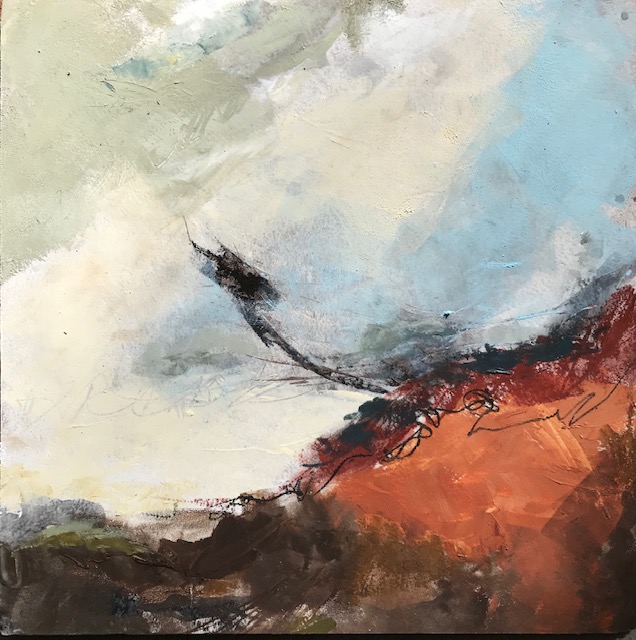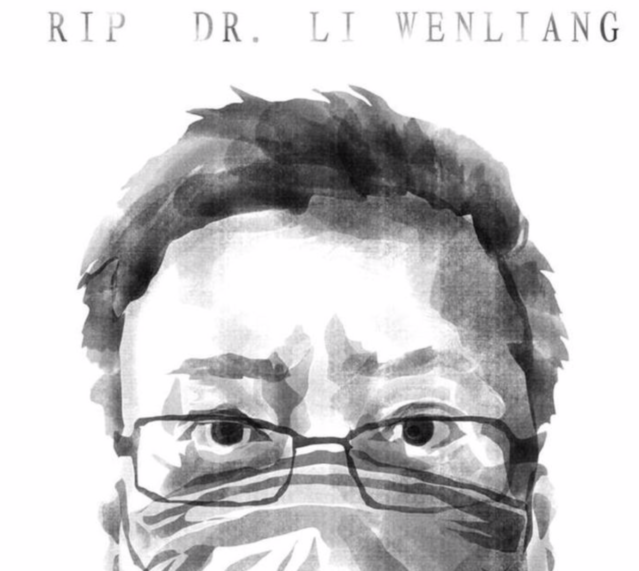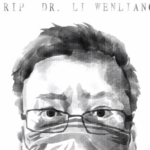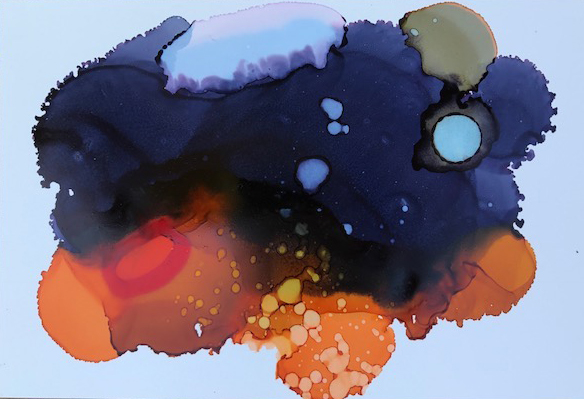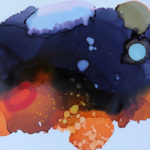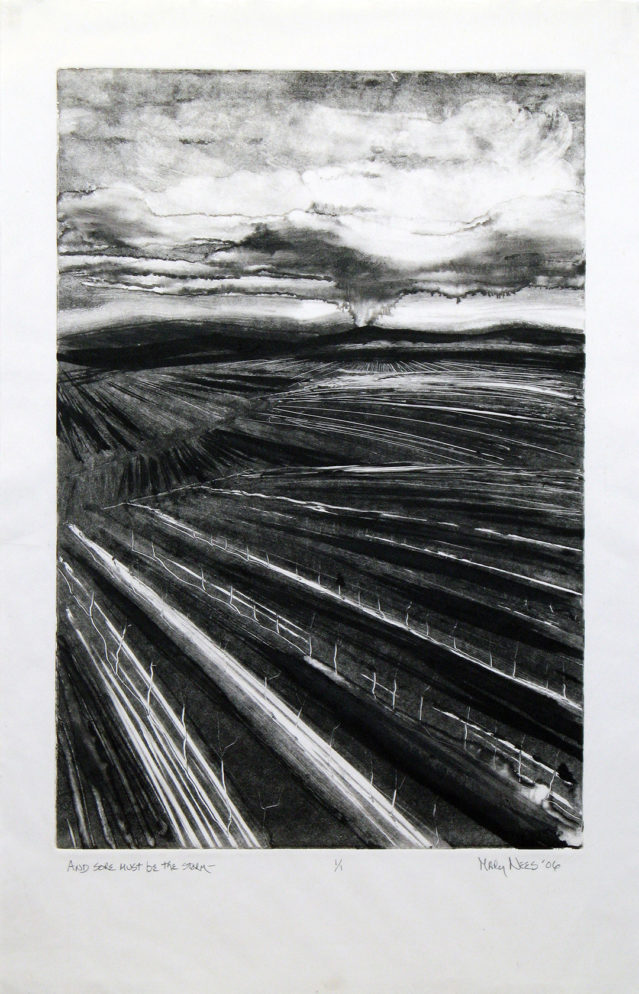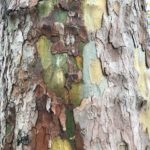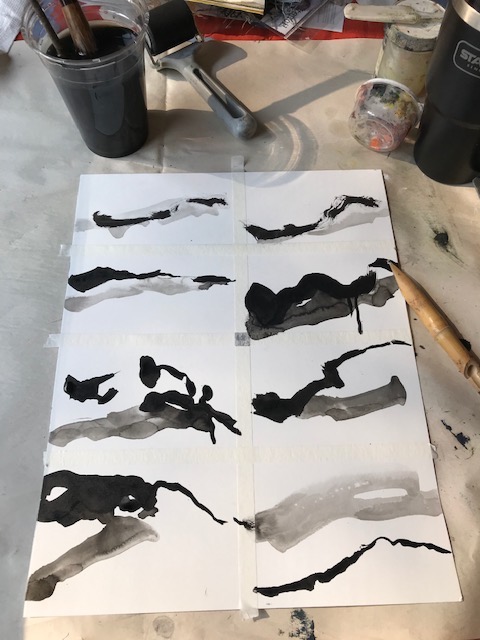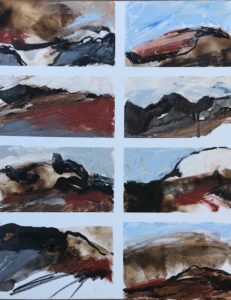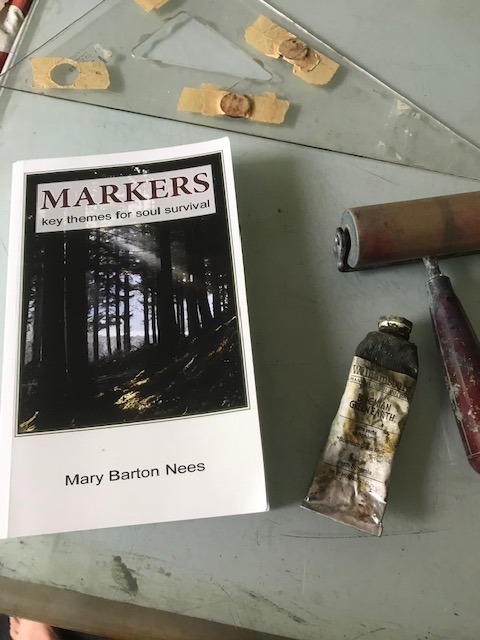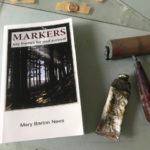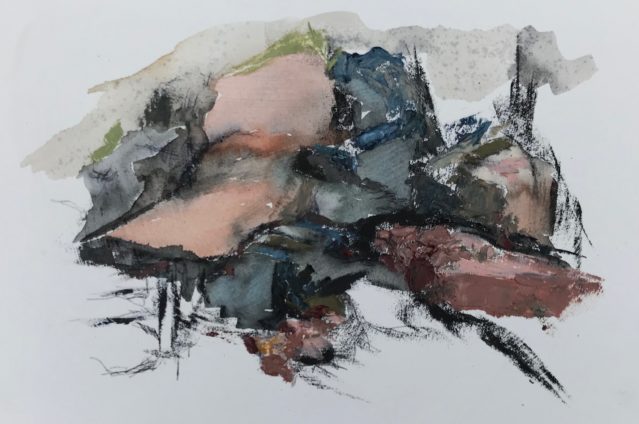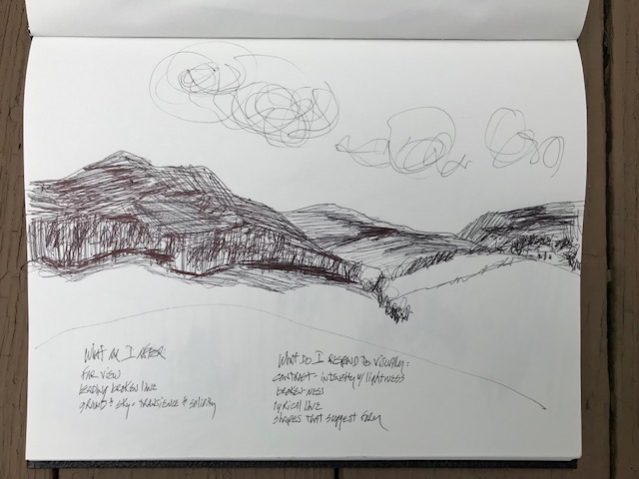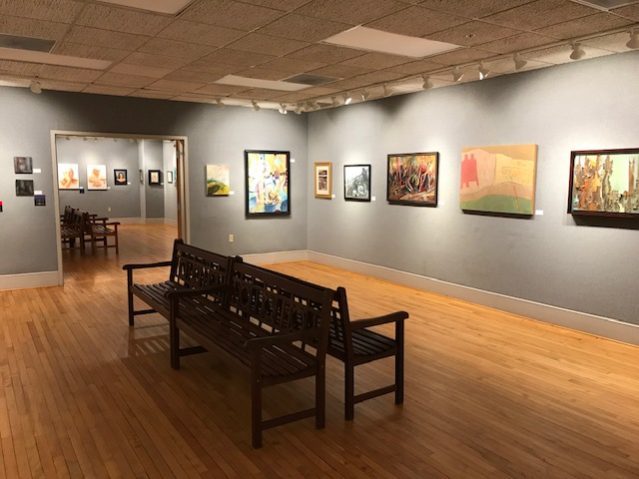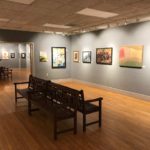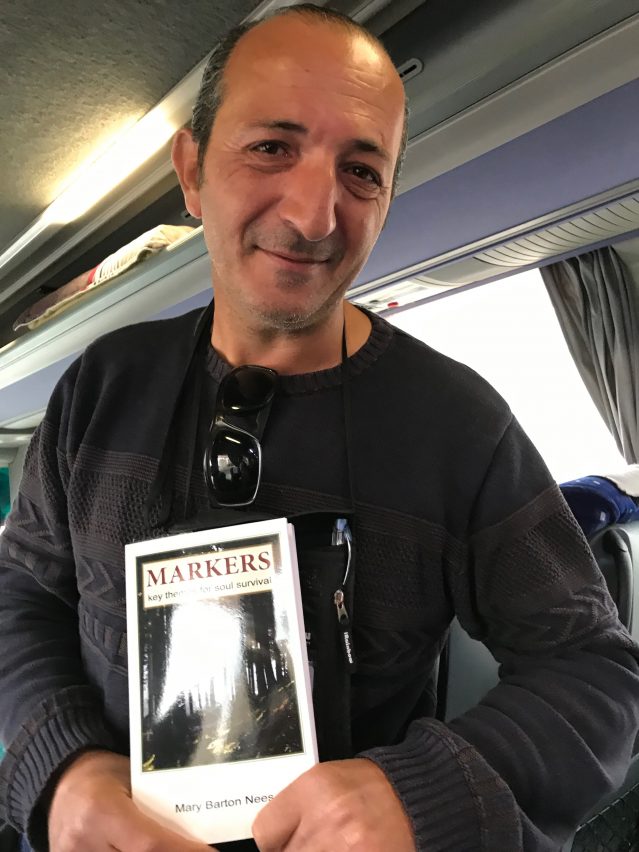Here’s an interesting thing, I did not plan this. Two weeks ago in studio, I prepped some square panels I had stacked; and since I had some gesso left in the cup, the brush still wet, I grabbed a couple more panels and coated them also with this base coat. Did I have a plan? All I remember was that I was going to make some starter marks on a couple of the panels once the gesso dried.
I then set out a simple color palette, and started in, working intuitively. If I got one solid piece out of the workday, I would have been satisfied. Some days just getting in the studio and working is victory enough. I am deliberately taking the pressure off. The effort is all practice. And the freeing thing is, if the result is poor, it’s just some history I can work on top of next time. Is it true that “the mouth speaks out of that which fills the heart”? In my case, the arm was moving out of that which was in my mind and probably my heart, for I have been studying biblical prophecy.
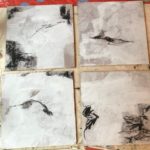
Now, I was not planning on illustrating what I was learning, that usually does not work well for me (it gets wooden that way, or even didactic). And I did not purposely select seven panels, I was being solely utilitarian with the materials I had, and the space on my worktable. My aim was to just get the materials moving. I started working on several of these prepped pieces at once with darks on white value studies and then worked in hues. If it had occurred to me at any point that I was illustrating something specific, I would have tightened up. But surely the data in my head was being drawn upon as I just played. My expectations were free.
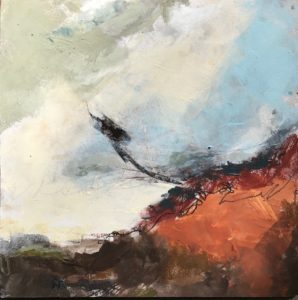
It was only after several hours of back and forth with the materials, rotations with the panels, that I realized I had near completed seven pieces. And then my head kind of exploded with the realization that these panels were a group of seven. I counted them: 1-2-3-4-5-6-7, yes it’s actually seven I’d been playing around with. Well, that was interesting, I thought to myself; I could reference the seven churches described in the beginning of Revelation with these, and maybe also incorporate the recently realized correspondence with the seven “mystery parables” that Jesus outlines in Matthew 13. The convergence between those two groups of seven is really fascinating. And here I had seven compositions of my own hand, which obliquely fit the main ideas in each of the two literary groupings. This, on panel, is my own surprising revelation. Showcased here is the 2nd of that series: “Smyrna and the Tares”. I haven’t yet titled the series.
